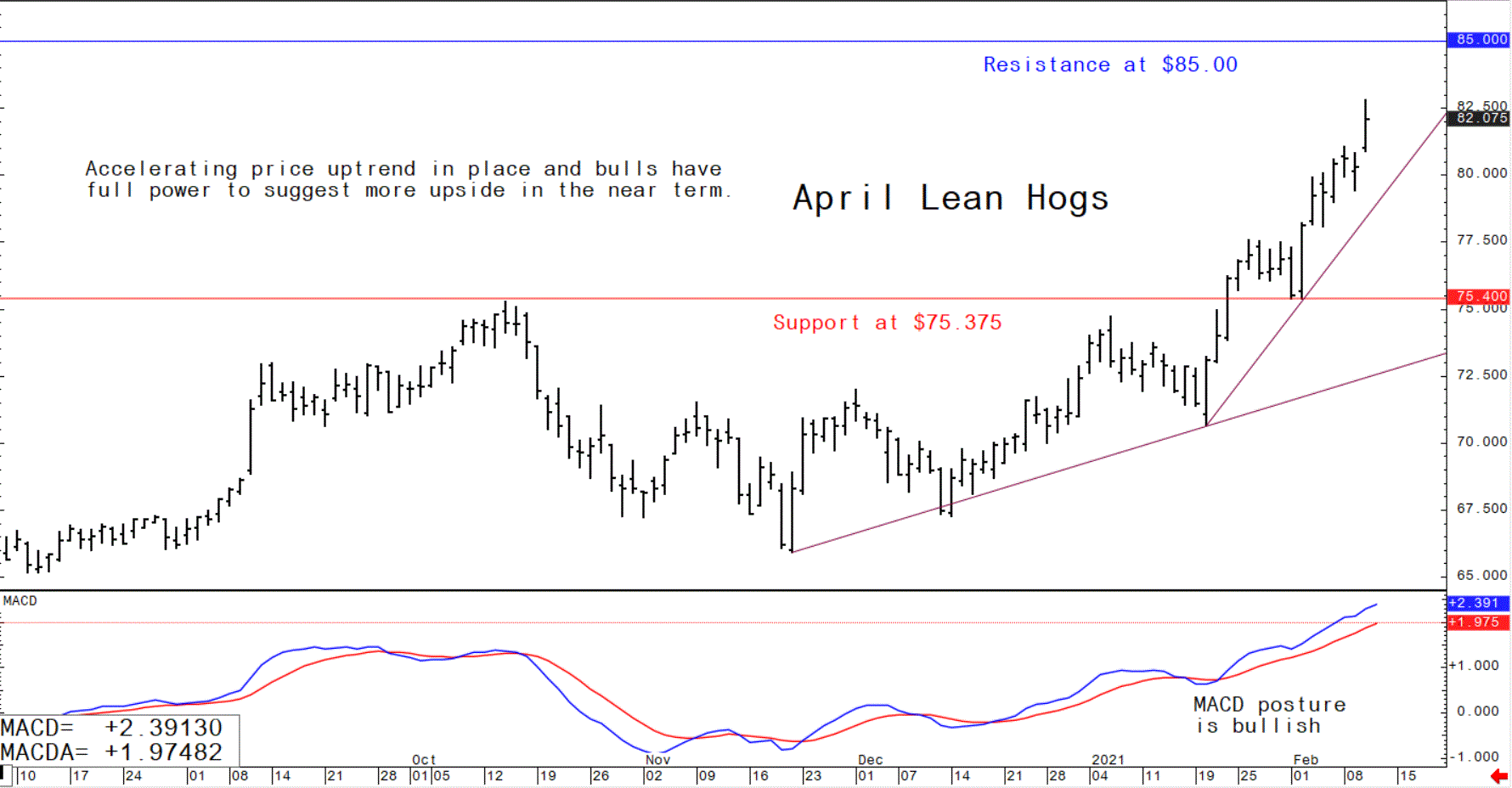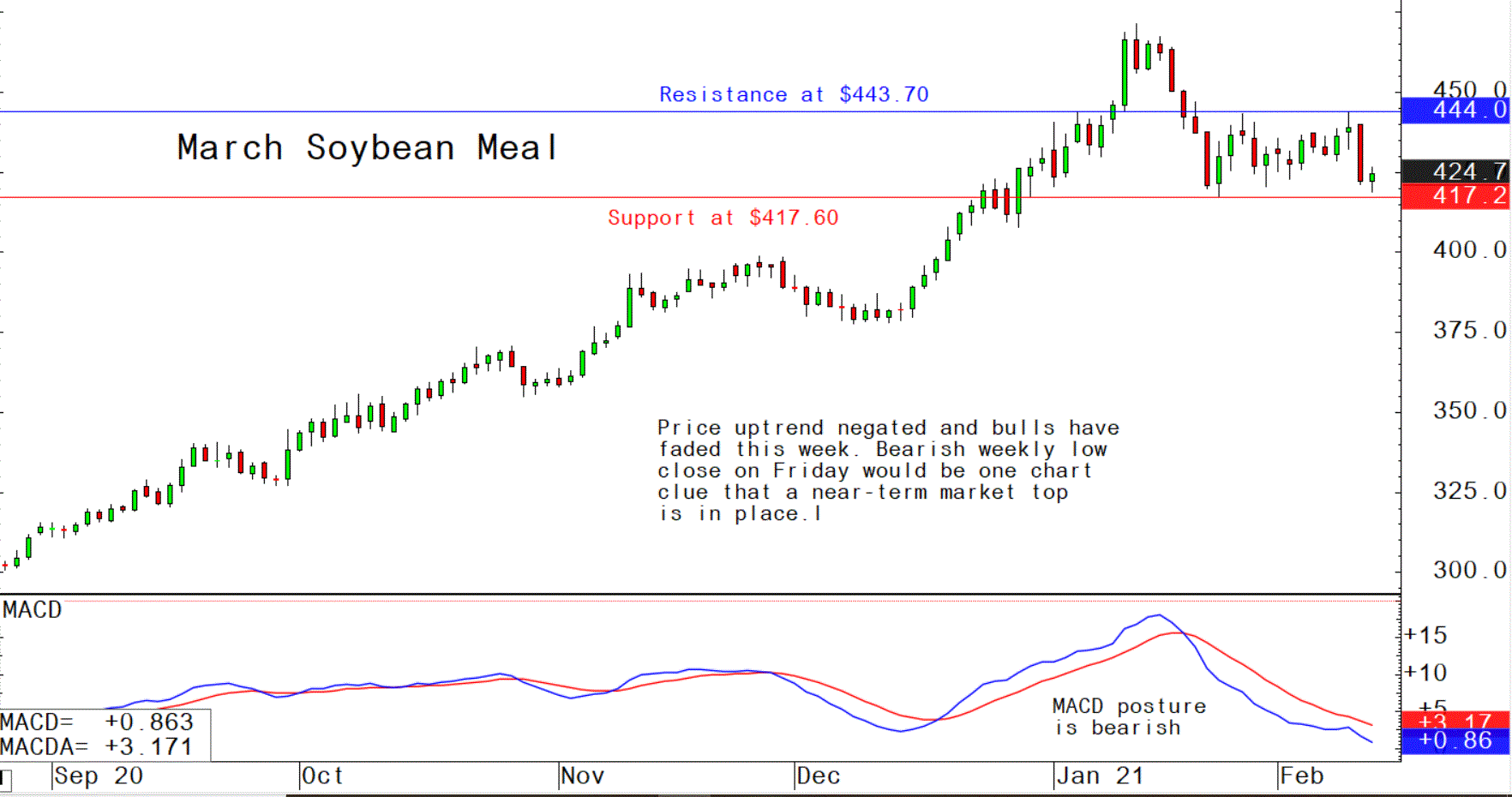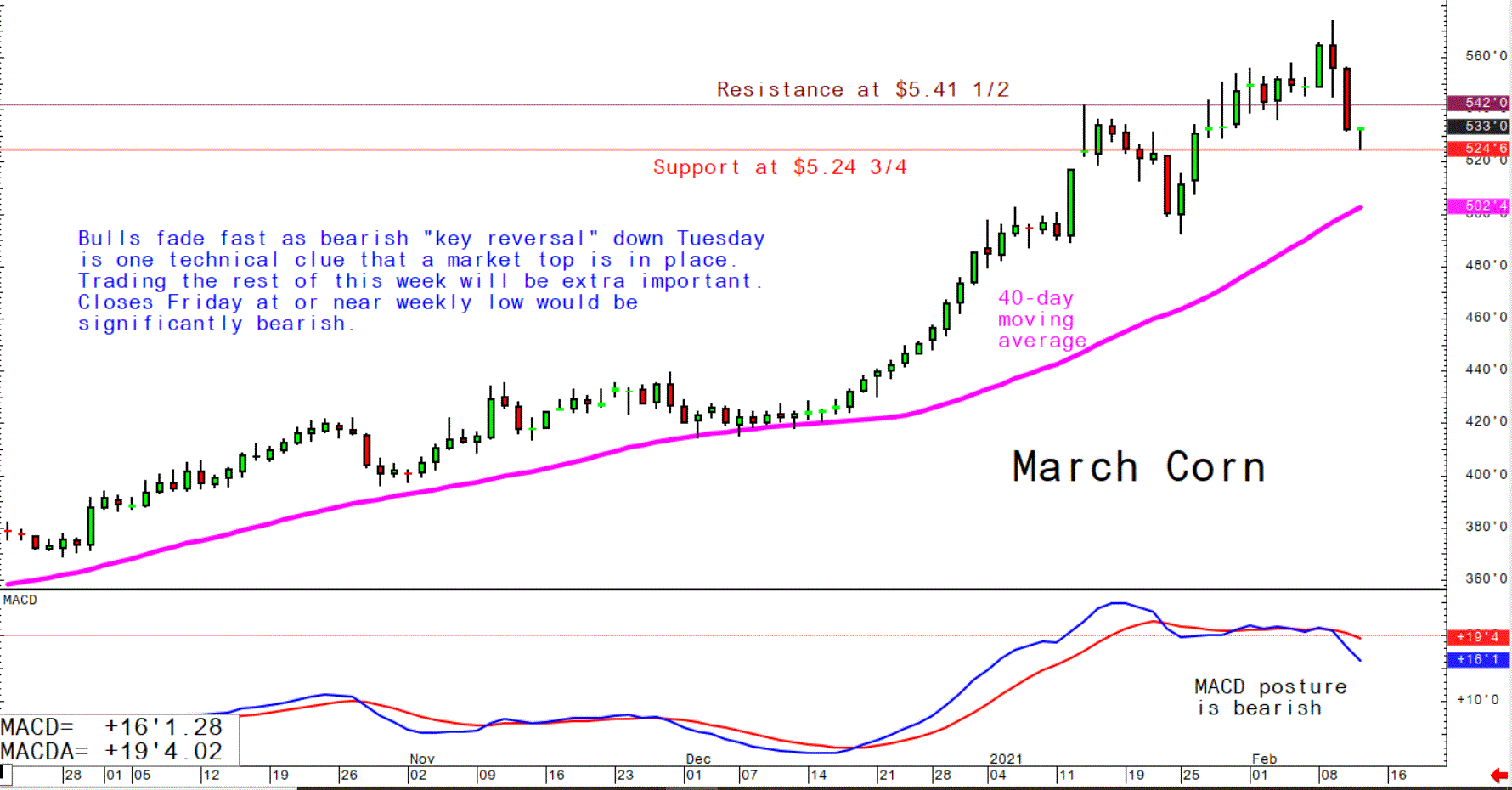



Pig outlook: Lean hog futures continue solid bull run
The bull market run in lean hog futures rolls on, fueled by strong export demand amid reports of disease in China’s hog herdThe pig traders’ perspective: Thursday’s weekly USDA export sales report confirmed the strong worldwide demand for U.S. pork continues. The US Meat Export Federation update on record-setting pork exports for 2020 reminded what an aggressive buyer China has been. The federation does not expect China to be quite as aggressive in 2021, but it also noted an uptick in US business to other nations in the fourth quarter of 2020. Meanwhile, cold temperatures are slowing marketings in the US Midwest. The rebound in US wholesale pork product movement this week, after a stretch of slow days, has also fueled the hog market bulls. The pork cutout value rose $3.25 at noon Wednesday, to $87.49. Hams and bellies led gains.
Latest US Department of Agriculture (USDA) reports, and other news
China remains a good buyer of US pork
USDA Thursday morning reported US pork net sales of 36,900 MT for 2021 saw increases primarily for China (9,700 MT, including decreases of 1,200 MT), South Korea (8,200 MT, including decreases of 200 MT), Mexico (5,100 MT, including decreases of 400 MT), Japan (4,700 MT, including decreases of 200 MT), and Canada (2,700 MT, including decreases of 400 MT), were offset by reductions for El Salvador (500 MT). Exports of 37,800 MT were primarily to China (10,700 MT), Mexico (10,000 MT), Japan (5,400 MT), South Korea (3,000 MT), and Canada (2,400 MT).
U.S. beef net sales of 17,500 MT reported for 2021 saw increases primarily for Japan (5,100 MT, including decreases of 500 MT), South Korea (4,300 MT, including decreases of 500 MT), Mexico (3,200 MT, including decreases of 100 MT), China (1,800 MT), and Taiwan (1,200 MT), were offset by reductions primarily for Vietnam (400 MT) and Colombia (100 MT). Exports of 17,600 MT were primarily to South Korea (5,000 MT), Japan (4,900 MT), China (1,500 MT), Mexico (1,500 MT), and Hong Kong (1,400 MT).
Hong Kong culls pigs due to ASF
The Hong Kong government (HKG) this week confirmed the first African Swine Fever (ASF) cases of the year in six pigs on a local farm on February 4, 2021. Two days later on February 6, 2021, two pigs in another shed on the same farm tested positive. These two cases of ASF led to the culling of 250 and 590 pigs, respectively. The current HKG policy is to cull pigs in the same shed as any pigs confirmed to be infected with ASF. Pigs on the infected farm and farms located within three kilometers are not allowed to move until further notice. The Hong Kong government will offer compensation to farmers based on the number of pigs culled. The Hong Kong government assured farmers and the public that they have stepped up surveillance of all farms in Hong Kong and encouraged farmers to report on any abnormalities concerning the health of their pigs. The majority of live pigs in Hong Kong are supplied by imports from mainland China on a daily basis. Local supplies account for 15 percent of total supply. The table below shows the live pig supplies in February 2021. As indicated by the Hong Kong government, the ASF cases in Hong Kong will have a minimal impact on overall supply
UK meat companies using EU to bypass export delays
British meat processors are registering businesses in the European Union to bypass post-Brexit export delays, with flows just 50% of normal levels and costs soaring, the British Meat Processors Association (BMPA) said. The move means Britain is losing jobs, the industry group warned, as delays caused by customs checks at the border have all but halted small lorry loads of mixed meat products heading to the EU and Northern Ireland.
US meatpackers want workers to get shots, but some aren’t sure
Meatpacking workers are among the next wave of people eligible for Covid vaccinations in some states. Their bosses want to make sure they get the shots. Reports say meat-industry officials said vaccines now being provided to some essential workers offer the best chance of ensuring safety for employees who cut meat, standing shoulder to shoulder, for hours at a stretch each day. Vaccination rates among plant workers could determine whether the $213 billion U.S. meat sector can move beyond the crisis that has upended the industry this past year, sickening thousands of workers and killing more than 130, according to labor union estimates.
Philippines hike pork import proposal
The Philippines plans to import around 400,000 MT of pork this year to help cover a domestic meat shortfall and rein in inflation. This is more than double the initial proposal to bring in 162,000 MT of the meat. The country’s hog herd was hit by African swine fever.
Chinese researchers say they have found a naturally occurring ASF mutation
Chinese researchers say they have found a national mutation of the African swine fever virus that may be less deadly than the one that decimated China’s herd in 2018 and 2019. There have recently been reports about a new strain of ASF spreading again in China and resulting in fewer healthy piglets per litter, with use of illegal vaccines being suspected as the cause. The researchers at the Military Veterinary Institute in Changchun said there appeared to be a growing trend of lower mortality from ASF with more clinical symptoms that are not easy to detect and difficult to control, similar to reports about cases reportedly stemming from the vaccines. The new strain is dubbed HuB20.
The next week’s likely high-low price trading ranges:
April lean hog futures--$78.97 to $85.00, and with a higher bias
March soybean meal futures--$410.00 to $$443.70, and with a sideways-lower bias
March corn futures--$5.20 to $5.50, and a sideways bias
Latest analytical daily charts lean hog, soybean meal and corn futures












